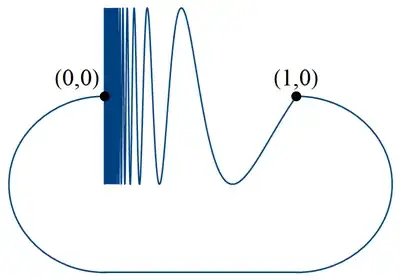The Section on Covering Maps in John Lee's book "Introduction to Smooth Manifolds" starts like this:
Suppose $\tilde{X}$ and $X$ are topological spaces. A map $\pi : \tilde{X} \to X$ is called a covering map if $\tilde{X}$ is path-connected and locally path connected, ... (etc).
I hope this question is not too dumb, but how can a space be path connected, but not locally path connected ?
EDIT: I am aware of spaces that are locally path-connected yet not path-connected, but I cannot come up with a space that is path - connected yet not locally path connected.
